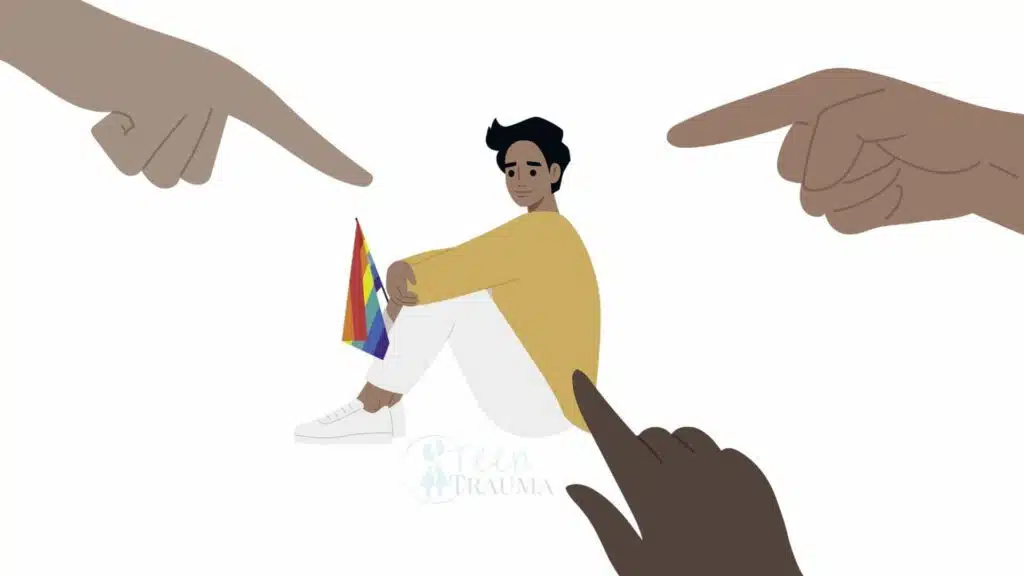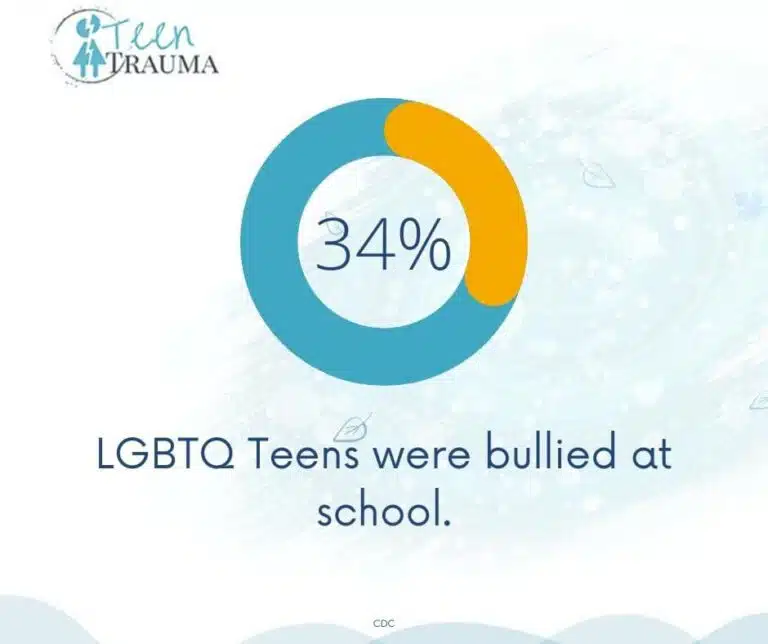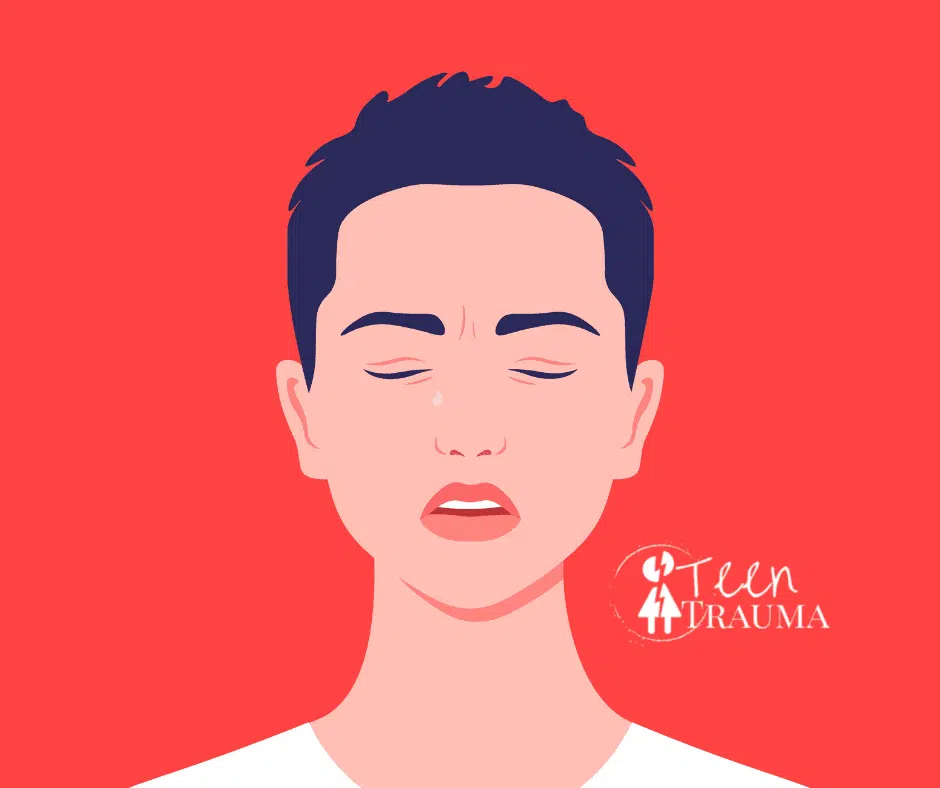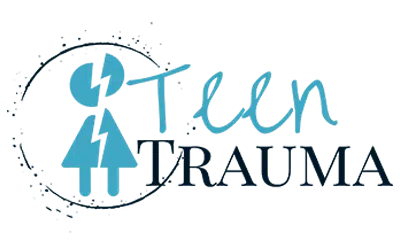Lesbian, Gay, Bisexual, and Transgender, Queer Teens Experience Trauma and PTSD
According to the National Child Traumatic Stress Network, LGBTQ teens experience trauma at a much higher rate than straight teens. Sadly, many professionals fail to meet the trauma needs of these teens, and this increases the risk for serious mental health concerns like suicide and depression. This guide will take a look at what trauma looks like for these young people, and what can be done to help them.
Defining LGBTQ Terms
There are two specific terms that surround the LGBTQ population apart from the words in the acronym. These terms are:
- Sexual orientation: This is a person’s identity that relates to the genders they feel sexual attraction toward. Someone may be heterosexual, which means attracted towards the opposite gender, or homosexual, which means attracted toward the same gender. They may also be bisexual, meaning they are attracted to both genders.
- Gender identity: This is the gender the teen feels applies to them. While many will embrace their biological gender, some teens feel their gender identity is not the same as the gender they were born with.
These two terms are umbrella terms under which the LGTBQ terms all fall. When you understand and embrace both sexual orientation and gender identity, you can start providing a supportive environment for the youth in your life.
Challenges LGTBQ Teens Face
According to a recent survey of U.S. secondary school students and teachers, bullying and harassment of teens who are struggling with gender identity or sexual orientation are common, affecting one-fifth of students. Over 21% reported they faced verbal harassment based on gender expression, and nearly 20% said they were harassed based on their perceived or actual sexual orientation.
Constantly fearing teasing, bullying, and overall social inequality, especially in a school setting, can open the door to mental health struggles. In fact, trauma responses are commonly seen in these young people.

The Link Between LGTBQ Lifestyles and PTSD
Much of the research about PTSD is focused on the needs of veterans, but a growing body of research finds that LGTBQ teens also experience harassment and violence to the point that they are experiencing PTSD symptoms. The trauma experienced in youth may not manifest until adulthood, leaving it unnoticed during the time when the teens need help the most. However, that does not negate the fact that it is there.
There are a few different types of trauma experienced by these teens. These include:
- Residual trauma: LGTBQ teens who have not experienced violence may take on some residual trauma and fear when they hear about the violent experiences of others within their community.
- Intergenerational trauma: This trauma is transferred onto a new generation from a previous one and can even be passed on through genetics.
- Trauma from oppression: LGTBQ teens who are involved in faith or cultural communities that reject their reality can face oppression, and that oppression can result in trauma.
Many factors can lead to this type of trauma, including:
- Abandonment issues when family members reject their identities
- Attachment problems due to lack of support from family and friends
- Codependency
- Internalized homo/transphobia
- Environmental stressors
- Damage due to violence against them from others
Violence toward these teens is actually very common. The CDC reports that 10% of teens are threatened with injury using a weapon on school property, and 34% were bullied at school. In addition, 28% face electronic bullying, and 23% experience sexual dating violence from a romantic partner.
The culminating effect of these traumatic episodes has long-lasting impacts on a teen’s mental health.

The Link Between LGBTQ Youth and Other Mental Health Disorders
While PTSD is common in this population of teens, there are other mental health disorders that they also face. For example, teens in this community are at high risk for eating disorders. One survey found that more than half of the teens who expressed LGTBQ tendencies were also found to struggle with eating disorders.
Depression is very common among these youth as well. This often stems from the complex trauma they experience due to violence and being misunderstood. If left untreated, depression can lead to suicidal thinking. Nearly 1/3 of LGBTQ teens will attempt suicide over the course of a year, which is far less than the 6% statistic for heterosexual youth.
Trauma and Depression Lead to Shame and Social Concerns

The combined effect of this trauma, the discrimination and physical harm these teens face, and actual physical harm that some of these teens can cause intense feelings of shame. This, in turn, makes them more likely to fall victim to human trafficking. In addition, these teens are at a very high risk of homelessness, even as young people.
One study found that there are 120% more likely to experience homelessness than straight youth. The reasons for this are complex, but often due to families who reject the child’s identity and make them leave home as a result. Being homeless further increases the chances of being trafficked, making this a very complicated problem.
How to Support LGTBQ Teens
The effects of violence, teasing, and trauma are serious, and the LGTBQ teen population is at extremely high risk. Acceptance is the first step toward reducing these problems, but the fact remains that these teens are at high risk even if they have accepting family and friends around them.
First, people who love LGTBQ teens need to learn to recognize the signs of mental health concerns and overall trauma. Then, they need to seek trauma-informed care when they are dealing with a traumatized teen. Sometimes, residential treatment is the most helpful, but finding professionals that support LGTBQ people is necessary. Professional mental health treatment is a key to ensuring these teenagers are able to come to a place of mental stability and overcome the effects of the trauma they’re experiencing.
Learning about LGTBQ facts and how they relate to a particular teenager’s experience is also vital. When these teens feel supported by those closest to them, they are less likely to fall victim to suicidal thinking and other dangerous mental health conditions. Awareness of the mental health impact of LGTBQ discrimination is also helpful.
If you have an LGTBQ teen in your life and feel that they may be experiencing mental health concerns, reach out to a professional for help. With the right help and support in place, you can create a supportive and loving environment to help them with their journey.
Trauma and its effects are a common problem in the LGTBQ community, but there are solutions to help these teens. By being aware and knowing what mental health resources are available, you can take steps to stop the trauma cycle and help these young people embrace their reality fully.
LGBTQ teens experience trauma at a much higher rate than straight teens.
#LGBTQYouth #Trauma #Teensteentrauma.com Tweet
Resources:
If you are an LGBTQ youth in need of help please visit:
or call the Trans Lifeline: 877-565-8860 or the LGBT National Youth Talkline: 1-800-246-PRIDE (7743)
If you are a parent looking for information on how to help your teenager, we recommend TroubledTeen.com a resource website for parents. Speak to one of their family advisors about teens suffering from complex trauma or PTSD.










